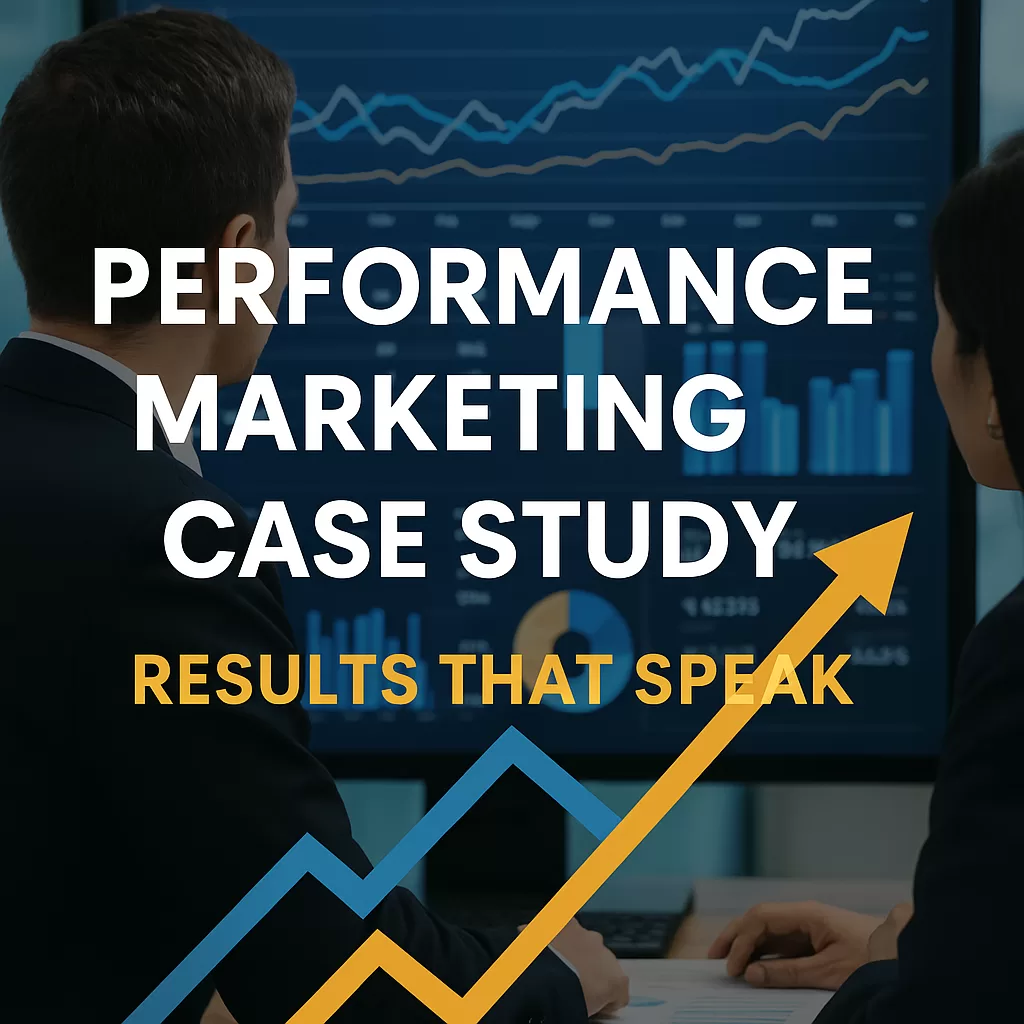
Introduction to Performance Marketing case study
What Is Performance Marketing case study?
Performance Marketing case study is all about measurable results. Think of it like a “you-get-what-you-pay-for” model where every dollar spent needs to move the needle—whether it’s sales, leads, or conversions. Unlike traditional advertising where you cross your fingers and hope for reach, performance marketing case study is built on real data and real returns.
Why Brands Are Prioritizing It in 2025
In 2025, brands aren’t just throwing money at ads. With rising customer acquisition costs and tighter margins, businesses want proof that their marketing dollars are working. Performance marketing offers that accountability and flexibility. You pay for performance, not promises.
Understanding the Goals of the performance marketing case study
Who Was the Client?
Our client was a mid-sized eCommerce company selling high-end home fitness equipment. They had solid organic traffic but struggled to scale paid media profitably.
What Problems Were They Facing?
- Low return on ad spend (ROAS)
- Inconsistent lead quality
- Lack of clarity around which channels were driving the best results
- Weak retargeting and nurture flows
Strategy Planning Phase
Competitor Analysis and Market Research
We dove deep into competitor campaigns, search volumes, audience behavior, and pricing models. This helped us craft messaging that stood out and addressed real customer pain points.
Setting Clear KPIs and Goals
Before launching anything, we aligned on clear KPIs:
- Target ROAS: 4.0x
- Cost Per Acquisition (CPA): Under $80
- Monthly revenue goal: $500K from paid channels
Channel Selection and Budget Allocation
Paid Social vs. Paid Search
We allocated 40% of the budget to Meta (Facebook/Instagram) and 35% to Google Ads (Search & Shopping). The remaining 25% went to native and influencer campaigns for broader reach.
Display, Native, and Influencer Ads
Native ads helped us capture top-of-funnel users while influencers added credibility. We focused on micro-influencers in the fitness niche who brought high engagement at a lower cost.
Campaign Execution
Funnel Optimization Strategy
We structured the funnel in three layers: Awareness, Consideration, and Conversion. Each had its own messaging, creative assets, and CTAs.
A/B Testing Creatives and Messaging
We tested over 15 ad creatives and 10+ landing page variations. Winning ads focused on transformation stories, while landing pages that included customer reviews converted best.
Tracking & Attribution Setup
UTM Strategy and CRM Integration
We implemented consistent UTM tagging and synced the ad platforms with the client’s CRM. This allowed for precise tracking and attribution from first click to final sale.
First-Party Data Capture Tactics
To future-proof the campaigns against cookie loss, we focused on email/SMS opt-ins through gated content and exclusive offers.
Performance Breakdown by Channel
Meta Ads – ROI & CPA
Meta Ads crushed it for mid-funnel engagement. We saw:
- 4.8x ROAS
- $65 average CPA
- 2.1% CTR on video ads
Google Ads – Search Intent Wins
Google Search and Shopping hit high-intent users:
- 5.2x ROAS on branded search
- 3.9x ROAS on non-branded
- 29% cart-to-checkout conversion rate
Retargeting Results and Customer LTV
Retargeting helped reduce bounce rates and increased LTV by 18%. Dynamic product ads (DPAs) brought users back and converted fence-sitters.
Real Numbers: Results Snapshot
Revenue Growth %
- 3-month paid media revenue: $1.53M
- Monthly revenue growth: +120%
Ad Spend ROI and CPA Reductions
- Total ad spend: $312K
- Average ROAS: 4.9x
- Overall CPA dropped from $92 to $67
Challenges Faced During the Campaign
Platform Policy Issues
Meta disabled one ad account due to compliance flags. We quickly pivoted with a backup account and adjusted creatives to pass review faster.
Seasonal Dips and Budget Reallocation
January saw a dip post-holiday rush. We reallocated budget toward Google Search and pushed value-driven offers to sustain conversion rates.
Key Learnings and Takeaways
What Worked Best
- Short-form UGC-style videos converted the highest.
- Clear CTAs and simplified checkout flows improved conversion rates.
- Segmenting audiences by funnel stage delivered stronger returns.
What We’d Do Differently Next Time
- Start with broader audience testing sooner.
- Launch retargeting earlier to warm up cold traffic quicker.
Client Testimonial
“AV Performance Marketing took our paid media from average to elite. The strategy, the execution, the reporting—everything was on point. We've never had this kind of consistent growth before.”
— Marketing Director, HomeFitGear
Final Thoughts
This case study shows what happens when data meets creativity and strategy meets execution. Performance marketing is not just about running ads—it’s about making every click, view, and conversion count.
Conclusion and Call to Action
If you're serious about results and tired of throwing ad dollars into a black hole, it's time to take performance marketing seriously. Let our team do for your brand what we did for HomeFitGear.
👉 Contact us now to get started
FAQs
1. What industries benefit most from performance marketing?
eCommerce, SaaS, healthcare, fitness, and local service providers tend to see strong ROI with well-run performance marketing campaigns.
2. How long does it take to see results?
Typically within 30–60 days, but it depends on your current funnel, audience size, and ad budget.
3. Can performance marketing work for startups?
Absolutely. With smart targeting and agile testing, startups can scale fast using performance channels.
4. How do you track ROI accurately?
We set up detailed tracking using UTM codes, CRM integrations, and platforms like Google Analytics 4 to measure everything from click to sale.
5. What's the minimum ad spend to start?
We recommend a minimum of $3,000–$5,000/month to gather enough data for optimization.
